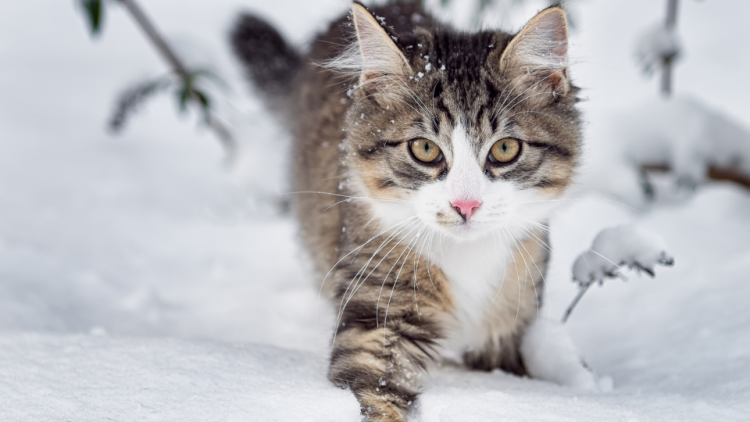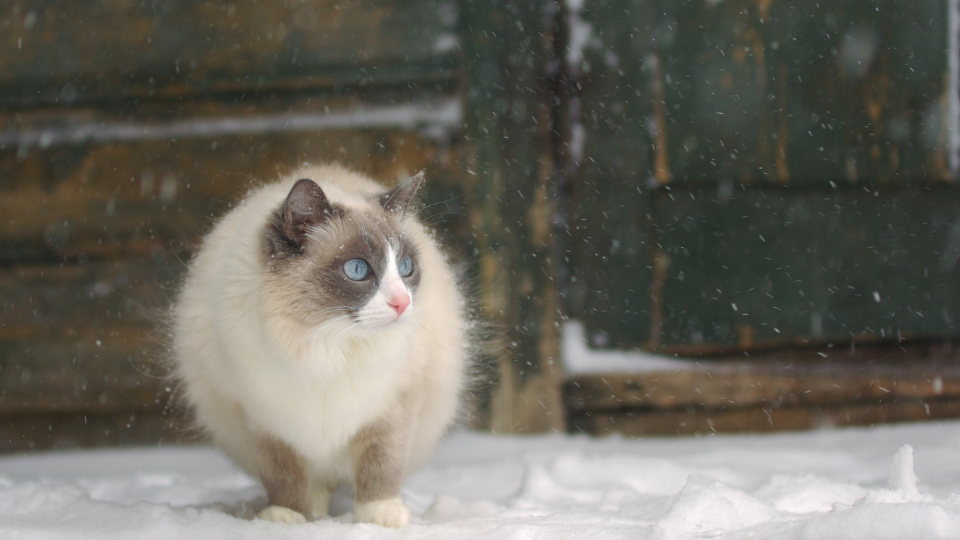When the weather is cold outside, there's an increased risk of winter illnesses in pets, such as feline frostbite. Indoor house cats may be less exposed to severe temperature extremes, but outdoor cats can quickly become affected by this painful condition.
In this post, we’re taking a closer look into what causes cat frostbite, what frostbite looks like on cats, and what to do at the first sign of red flags.
Here's everything you need to know:
- Can cats get frostbite?
- What causes frostbite in cats?
- What does frostbite look like on cats?
- What to do if you think your cat has frostbite
- How do vets treat cat frostbite?
- How to prevent cats from getting frostbite
- Key Takeaways
Pro Tip: No matter how hard we try to protect our pets from seasonal health hazards, unfortunate accidents can always happen. Cat health insurance is designed to cover the expensive cost of unexpected vet visits to ensure your feline friend can always receive the care they need.
Full List Of Common Illnesses In Cats
Can cats get frostbite?
Cats are at high-risk of frostbite with prolonged exposure to temperatures below 32-degrees Fahrenheit (℉). Wet coat, wind chill, as well as direct contact with cold metallic objects can significantly increase the risk of frostbite.
The pets most vulnerable to feline frostbite include:
- Kittens and senior cats
- Cats without shelter
- Cats with health conditions that impair circulation, including heart disease, diabetes, kidney disease, and hyperthyroidism
What causes frostbite in cats?
Extremely cold weather causes skin to constrict and narrow down the blood vessels therein. When this happens, the body diverts blood flow away from the extremities to maintain its core temperature. The freezing cold combined with decreased blood flow results in the formation of ice crystals inside skin cells, causing severe tissue injury.

Stages of frostbite in cats
There are three stages of cat frostbite:
- The first stage, known as frostnip, is the mildest. It only affects the top skin layer and usually doesn't cause irreversible injury.
- The second stage is called superficial frostbite, which turns the skin waxy or pale. It can cause damage, including spots or blisters, as the skin warms.
- The last stage, deep frostbite, affects all skin layers and even the tissue underneath. In this stage, the skin usually turns bluish-gray or white and there’s a complete loss of sensation. Once the skin is warmed, big blisters will appear within one to two days. Eventually, the affected area will harden and turn black as the tissue dies, resulting in permanent damage.
It should also be noted that a cat with frostbite is also very likely to be suffering from hypothermia (very low body temperature).
What does frostbite look like on cats?
The tissue damage caused by feline frostbite most commonly affects the tail, ears, nose, and paws.
Cat frostbite symptoms may appear as:
- Discoloration of the affected area (pale, bluish, or gray)
- Blistering and skin ulcers
- Blackened or dead skin
- Swollen and painful skin
- Fur falling out, leaving inflamed and bald areas
- The affected area being cold and/or brittle to the touch
- The affected area being numb or lacking sensation
It might take several days for the full extent of the damage caused by cat frostbite to become visible. A few days after exposure to extreme cold, frostbitten tissue might start to smell as a result of secondary infections.
What to do if you think your cat has frostbite
If you notice any cat frostbite symptoms, be sure to act fast before tissue damage becomes irreversible. Most vets recommend the following first aid:
- Quickly move your pet to a warm and dry area.
- If your cat’s body temperature is low and you think they’re suffering from, wrap them in a blanket and place hot water bottles wrapped in towels near them. Keep the animal wrapped while traveling to your vet for medical treatment.
- Don’t apply direct heat on the affected area, such as a hairdryer or heating pad. You may soak the affected area in a bowl of warm water or apply warm water compresses.
- Don’t massage or rub the affected skin area.
- Don’t give any pain relief medication unless instructed by your vet
How do vets treat cat frostbite?
If you suspect your cat has frostbite, you should take them to the vet right away. Only they can diagnose the condition based on your cat’s history of cold exposure and a physical examination of the lesions.
Since the thawing tissues are very painful, the vet will probably prescribe pain medication, as well as antibiotics to prevent secondary infections. The veterinarian will also continue the warming process by applying warm dressings and using warm intravenous fluids.
If there is dead tissue, it will need to be removed and any wounds resulting from frostbite will require wound management in order to prevent infection. In severe cases, the affected body part will need to be amputated.

Cat frostbite treatment cost
While milder cases of frostbite might require no cost to treat, more serious cases can cost from $200 to $800. If surgery is required to amputate the affected body parts, the cost will be significantly higher.
Pro Tip: Rushing your cat to the vet clinic can be stressful, especially if you have to worry about the costs of treatment. Pet insurance is valuable because it provides peace of mind in knowing that your cat can receive the critical care they need without creating a significant financial burden.
Recovering from frostbite in cats
As the areas of frostbite begin to heal, they will become itchy and uncomfortable to your cat. Do not allow them to scratch, chew, or lick the affected area, which is best accomplished by using an E collar.
Milder cases of frostbite are very likely to make a full recovery without causing permanent damage. In more severe cases that require amputation, prevent your cat from chewing or licking the sutures, and ensure they remain indoors for about 10 days or until healing is complete to prevent complications. When the sutures are removed, the animal can go back to leading a normal lifestyle.
How to prevent cats from getting frostbite
To prevent your pet from experiencing feline frostbite, be sure they are indoors when temperatures drop below 40 degrees. However, if they are used to spending time outside and refuse to stay indoors, you should provide a warm shelter during the winter.
Key Takeaways
- Frostbite results from prolonged exposure to freezing temperatures and most commonly affects the tail, ears, nose, and paws.
- Common symptoms of frostbite in cats include the body feeling cold to the touch, fur falling out of affected areas, discolored greyish skin, skin blisters, etc.
- If you think your pet is suffering from frostbite, some of the steps to take include wrapping them in warm blankets and rewarm frostbitten skin with warm water. Don’t rub the affected areas and don’t give your cat pain medication.
- Once you notice signs of frostbite in your cat, be sure to take them to the vet as soon as possible. Your vet will recommend adequate treatment depending on the severity of your cat’s frostbite.
